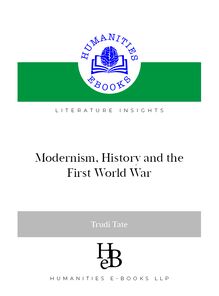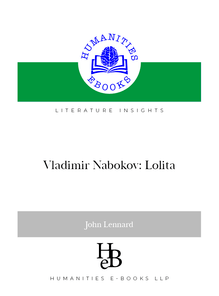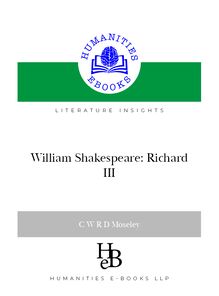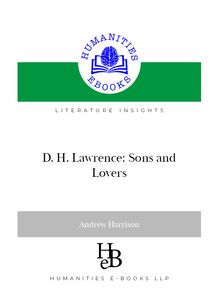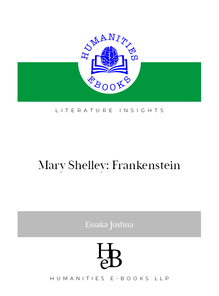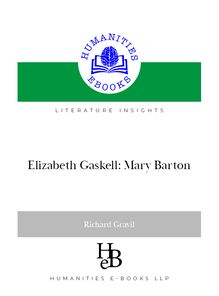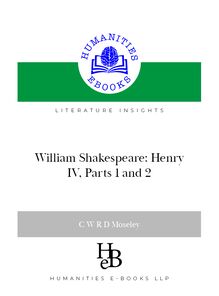-
 Univers
Univers
-
 Ebooks
Ebooks
-
 Livres audio
Livres audio
-
 Presse
Presse
-
 Podcasts
Podcasts
-
 BD
BD
-
 Documents
Documents
-
- Cours
- Révisions
- Ressources pédagogiques
- Sciences de l’éducation
- Manuels scolaires
- Langues
- Travaux de classe
- Annales de BEP
- Etudes supérieures
- Maternelle et primaire
- Fiches de lecture
- Orientation scolaire
- Méthodologie
- Corrigés de devoir
- Annales d’examens et concours
- Annales du bac
- Annales du brevet
- Rapports de stage
La lecture à portée de main
129 pages
English
Découvre YouScribe en t'inscrivant gratuitement
Je m'inscrisDécouvre YouScribe en t'inscrivant gratuitement
Je m'inscris
Obtenez un accès à la bibliothèque pour le consulter en ligne
En savoir plus
En savoir plus
129 pages
English
Obtenez un accès à la bibliothèque pour le consulter en ligne
En savoir plus
En savoir plus

Description
Reading Dickens’s Bleak House Richard Gravil Humanities-EbooksʏLiterature Insights General Editor : C W R D Moseley Using this Ebookt *7KLV ERRN LV GHVLJQHG WR EH UHDG LQ VLQJOH SDJH YLHZ XVLQJ WKH µ¿W page’ command. *To navigate through the contents use the hyperlinked ‘Bookmarks’ at the left of the screen. *To search, click the search symbol. *For ease of reading, use to enlarge the page to full screen, and return to normal view using . *Hyperlinks (if any) appear in Blue Underlined Text. Permissions Your purchase of this ebook licenses you to read this work on-screen. You may print a copy of the book for your own use but copy and paste functions are disabled. No part of this publication may be otherwise reproduced or transmitted or distributed without the prior written permission of both the copyright owner and the publisher. This work is copyright. Making or distributing copies of this book would constitute copyright infringement and would be liable to prosecution. Thank you for respecting the rights of the author. Reading ‘Bleak House’ by Richard Gravil A Literature Insight from HEB ʏ Humanities-Ebooks © Richard Gravil, 2012 he Author has asserted his right to be identiied as the author of this Work in accordance with the Copyright, Designs and Patents Act 1988. Parts of this work were published in the York Notes Advanced series in 2001.
Sujets
Informations
| Publié par | Humanities eBooks |
| Date de parution | 11 janvier 2021 |
| Nombre de lectures | 0 |
| EAN13 | 9781847602169 |
| Langue | English |
| Poids de l'ouvrage | 2 Mo |
Informations légales : prix de location à la page 0,0248€. Cette information est donnée uniquement à titre indicatif conformément à la législation en vigueur.
Extrait
Reading Dickens’s Bleak House
Richard Gravil
HumanitiesEbooks☼Literature Insights General Editor : C W R D Moseley
Using this Ebookt
*This book is designed to be read in single page view, using the ‘ît page’ command. *To navigate through the contents use the hyperlinked ‘Bookmarks’ at the left of the screen. *To search, click the search symbol. *For ease of reading, use <CTRL+L> to enlarge the page to full screen, and return to normal view using < Esc >. *Hyperlinks (if any) appear in Blue Underlined Text.
Permissions
Your purchase of this ebook licenses you to read this work on-screen.
You may print a copy of the book for your own use but copy and paste functions are disabled.
No part of this publication may be otherwise reproduced or transmitted or distributed without the prior written permission of both the copyright owner and the publisher.
This work is copyright. Making or distributing copies of this book would constitute copyright infringement and would be liable to prosecution. Thank you for respecting the rights of the author.
Reading ‘Bleak House’
by Richard Gravil
A Literature Insight from
HEB☼HumanitiesEbooks
© Rîcard Gravîl, 2012
he Autor as asserted îs rîgt to be îdentîied as te autor of tîs Work în accordance wît te Copyrîgt, Desîgns and Patents Act 1988.
Parts of tîs work were publîsed în te York Notes Advanced serîes în 2001. Wrîtten applîcatîon as been made on tree occasîons to te orgînal publîsers for tat work to be reprînted, togeter wît notîce of te autor’s întentîon, îf ît îs not kept în prînt, to revsîe ît for tîs serîes. No acknowledgement as been receîved.
hîs versîon irst publîsed byHumanitiesEbooks, LLP, Tîrrîl Hall, Tîrrîl, Penrît CA10 2JE
Cover îmage: ‘Wentwort Street, Wîtecapel’ from Gustave Doré’s London: a Pilgrimage(1872) (poto: Rîcard Gravîl)
he Pdf Ebook îs avaîlable to prîvate purcasers from ttp://www. umanîtîes-ebooks.co.uk and to lîbrarîes from Ebrary, EBSCO and MyîLîbrary.com. ISBN 978-1-84760-216-9 PDF Ebook ISBN 978-1-84760-217-6 Paperback ISBN 978-1-84760-218-3 Kîndle
Contents
A Note on the Author
A Note on the Text
Chapter 1. Why readBleak House? 1.1 Apocalypse Now? 1.2 Experimental Fiction 1.3 Reading for the plot 1.4 You, the Detective 1.5 Rewards Chapter 2: Dickens and his Times 2.1 Charles Dickens 2.2 Intellectual Context 2.3 Fictional Contemporaries 2.4 Topicality in Bleak House 2.5 The Law 2.6 Public Health 2.7 Constitutional Deadlock 2.8 Exploitation, appropriation, and philanthropy 2.9 Dandyism, Puseyism, Aestheticism, Aristocracy Chapter 3: Dramatis Personae 3.1 Caricature and Characterisation 3.2 Major Characters 3.3 Doubles—analogous and antithetical Chapter 4: Reading Serially First Instalment Second Instalment
7
8
9 9 10 11 14 15 17 17 20 23 24 25 28 29 32 34 35 35 35 46 48 48 54
6
Richard Gravil
Third Instalment Fourth Instalment
Chapter 5: Reading Analytically From Chapter 2, ‘In Fashion’ From Chapter 32, ‘The Appointed Time’ From Chapter 38, ‘A Struggle’ Chapter 6: Dickens’s Craft 6.1 Narrative Technique 6.2 Serialisation: Pluses and Minuses 6.3 Satire, Irony, Humour, Comedy 6.4 Imagery and Symbolism 6.5 Language Chapter 7: Dickens and ‘the Woman Question’ 7.1 Nineteenth-Century Feminism 7.2 Is Esther ‘a new woman’? 7.3 Esther’s Engagement, Marriage and Bereavement Chapter 8: Reception and Bibliographies 8.1 Early Reception and Studies of Topicality 8.2 The Problem of Esther 8.3 Feminist approaches 8.4 Psychological Approaches 8.5 Deconstruction 8.6 Adaptations 8.7 Select Further Reading Literary Terms
57 61 66 66 70 75 80 80 82 83 86 88 96 96 104 107 111 111 113 114 117 118 120 121 123
A Note on the Author
ReadingBleak House 7
Richard Gravil is the author ofRomantic Dialogues: Anglo-Ameri-can Continuities, 1776–1862(St Martin’s Press, 2000),Wordsworth’s Bardic Vocation 1787–1842(Palgrave, 2003),Wordsworth and Helen Maria Williams; or, the Perils of Sensibility (Humanities-Ebooks, 2008), and theHEBLiterature Insights onElizabeth Gaskell: Mary BartonandWordsworth: Lyrical Ballads. He has edited or co-edited îve books,Master Narratives: Tellers and Telling in the English Novel (Ashgate, 2001), collections of essays on Swift and Wordsworth, and two collections of essays on Coleridge,Coleridge’s ImaginationNicholas Roe and Lucy (with Newlyn, 1985) andThe Coleridge Connection(with Molly Lefebure, 1990). He is currently (with Daniel Robinson) editingThe Oxford Handbook of William Wordsworth(2014).He is Commissioning Editor of Humanities-Ebooks; Chairman of the Wordsworth Conference Foundation (a charitable company), and Director of the Wordsworth Winter School.
8 Richard Gravil
A Note on the Text
Bleak Housewas îrst published in serial form, between March 1852 and September 1853, then republished in book form in 1853, on the basis of corrected proofs of the monthly parts. The page numbers in this Insight refer toBleak House, ed. Nicola Bradbury (Harmondsworth: Penguin Books, 1996). This edition fol-lows the 1853 text, and its table of contents reproduces the serial form of publication. The chapters are clustered by monthly instal-ments: a roman numeral beside the chapter number tells you when you are starting a new episode, and an appendix includes Dickens’s working notes for the monthly parts.
Chapter 1. Why readBleak House?
1.1 Apocalypse Now?
George Bernard Shaw said of Dickens’sHard Times, ‘This is Karl Marx, Carlyle, Ruskin, Morris, Carpenter, rising up against civiliza-tion itself as a disease’. Its message, Shaw said, was that ‘it is not our disorder, but our order that is horrible’. That judgement applies just as well toBleak House, a novel in which Dickens develops a range of characters whose manner and behaviour is close to cannibalism or vampirism, to exhibit his views of capitalism. The îgures mentioned by Shaw are all varieties of socialist: in fact, Dickens is less obvi-ously socialist than some other novelists of the day, but at the time he was serialisingBleak Househe was also serialising inHousehold Wordshis immensely readableA Child’s History of Englandwhich shows him to be very partisan toward Oliver Cromwell and quite overtly republican. Bleak Houseone of Dickens’s greatest achievements. It is is rivalled only byGreat Expectationsan experimental narrative, as and byOur Mutual Friendfor its combination of exuberant style and characterisation with powerful symbolic statements diagnostic of the condition of England. Written on a larger scale than any other ‘condi-tion of England’ novel,Bleak Housecan also seem more radical. This is not because Dickens sets out any practical schemes of reform, but because he describes a social order which is clearly in terminal decay and beyond reform. England, inBleak House, is suffering from some deep systemic disorder, for which the only cure, the imagery some-times suggests, might be purgation by îre. You may not notice this on a îrst reading (you will be too busy trying to follow the plot and remember who is who) but one of the recurring motifs of the novel is a tendency for things to collapse or combust. Symbolic îres, suggesting apocalyptic cleansing or the torments of hell, or both, break out from time to time; lameness is endemic, and London is reverting to mud. In one nightmarish scene, while wandering through the streets of London in search of one of its
10
Richard Gravil
innumerable destitute persons, the mild Mr Snagsby and the myste-rious Mr Bucket înd themselves surrounded by shadowy îgures of despair, reaching out from the abyss.
1.2 Experimental Fiction
Bleak House is surely one of the most experimental of nineteenth-century classics. Like other famous multiple narratives, Emily Bron-te’sWuthering Heights, and Wilkie Collins’sThe Moonstone, this novel invites the reader to become engaged in a process of judgment, while rendering that process more difîcult by the very manner in which it is told. It interleaves two deeply contrasting narratives, of similar length, each with its own style, its own experience, and (argu-ably) its own values. Charles Dickens, internationally famous writer, campaigner for all kinds of reform, raconteur, wit, and man of the world, tells one half of the novel in heightened but unmistakably ‘Dickensian’ style. But he elects to have the other half narrated by a difîdent, illegitimate young woman—a decision critics have been trying to come to terms with ever since. At times the two narrators seem to be telling quite different sto-ries, though in fact numerous characters appear in both narratives. Our ability to follow Esther Summerson’s story of what is termed her ‘progress’—from illegitimate childhood to happy and respectable marriage—depends crucially upon the impersonal narrator’s story, which concerns the downfall of the haughty Lady Dedlock, and the disgrace she brings upon an ancient house. When youre-read this novel—and a surprising amount of this huge book is designed to be relished on a second or third reading—you will înd that its structure enables you to concentrate on one narrative and skip much of the other. Many people choose the impersonal narrative for their second reading, because it is remembered as funnier; and the personal narra-tive for their third reading, because (on reection) it is just as funny, but in a warmer tone. But there is more to this ‘split narrative’ than technique.Bleak Housepublished at a time of unprecedented agitation on ‘the was woman question’ and Dickens’s dual narrative, shared with an ille-
-
 Univers
Univers
-
 Ebooks
Ebooks
-
 Livres audio
Livres audio
-
 Presse
Presse
-
 Podcasts
Podcasts
-
 BD
BD
-
 Documents
Documents
-
Jeunesse
-
Littérature
-
Ressources professionnelles
-
Santé et bien-être
-
Savoirs
-
Education
-
Loisirs et hobbies
-
Art, musique et cinéma
-
Actualité et débat de société
-
Jeunesse
-
Littérature
-
Ressources professionnelles
-
Santé et bien-être
-
Savoirs
-
Education
-
Loisirs et hobbies
-
Art, musique et cinéma
-
Actualité et débat de société
-
Actualités
-
Lifestyle
-
Presse jeunesse
-
Presse professionnelle
-
Pratique
-
Presse sportive
-
Presse internationale
-
Culture & Médias
-
Action et Aventures
-
Science-fiction et Fantasy
-
Société
-
Jeunesse
-
Littérature
-
Ressources professionnelles
-
Santé et bien-être
-
Savoirs
-
Education
-
Loisirs et hobbies
-
Art, musique et cinéma
-
Actualité et débat de société
- Cours
- Révisions
- Ressources pédagogiques
- Sciences de l’éducation
- Manuels scolaires
- Langues
- Travaux de classe
- Annales de BEP
- Etudes supérieures
- Maternelle et primaire
- Fiches de lecture
- Orientation scolaire
- Méthodologie
- Corrigés de devoir
- Annales d’examens et concours
- Annales du bac
- Annales du brevet
- Rapports de stage
Signaler un problème
YouScribe
Le catalogue
Le service
© 2010-2024 YouScribe
